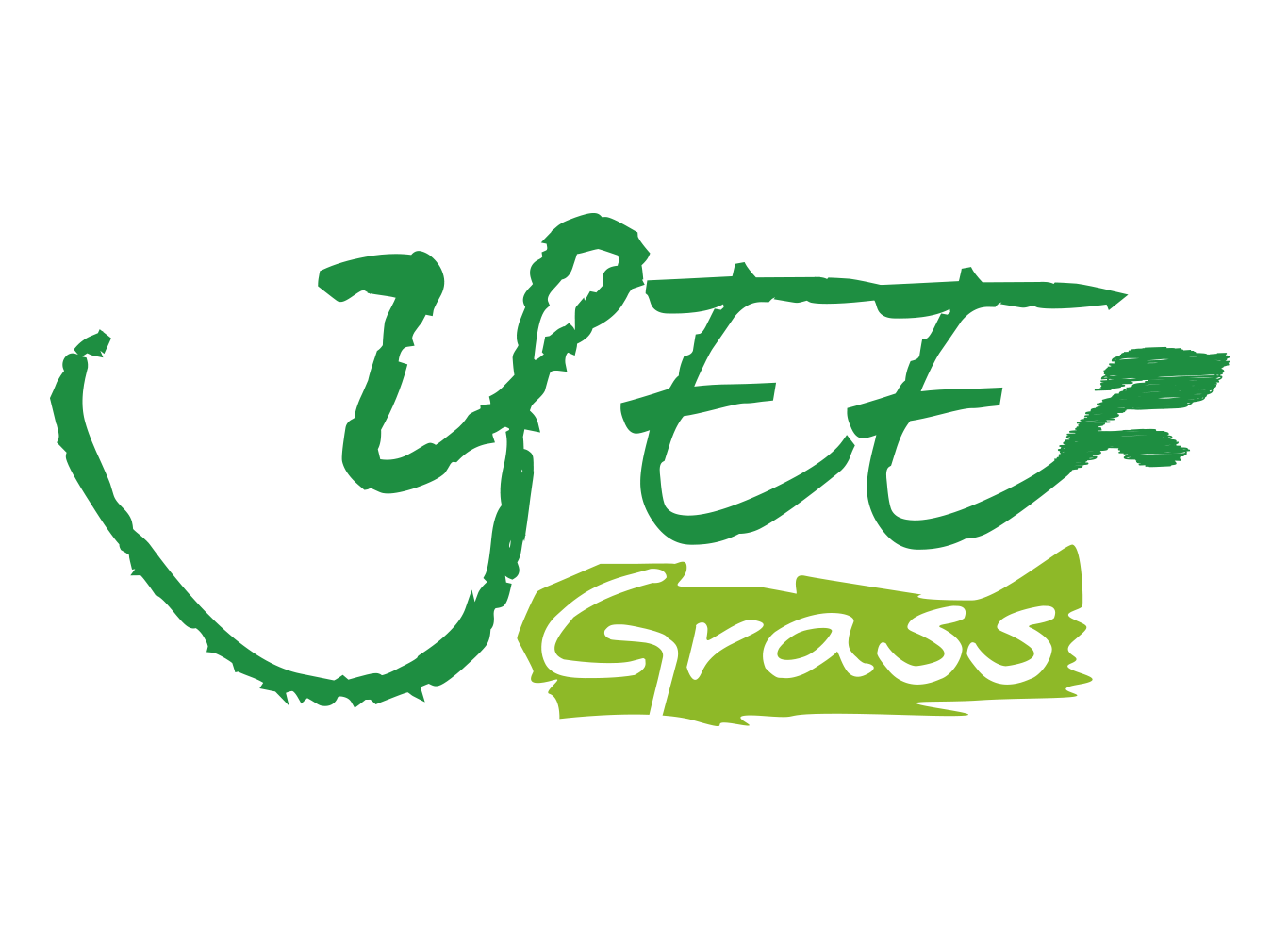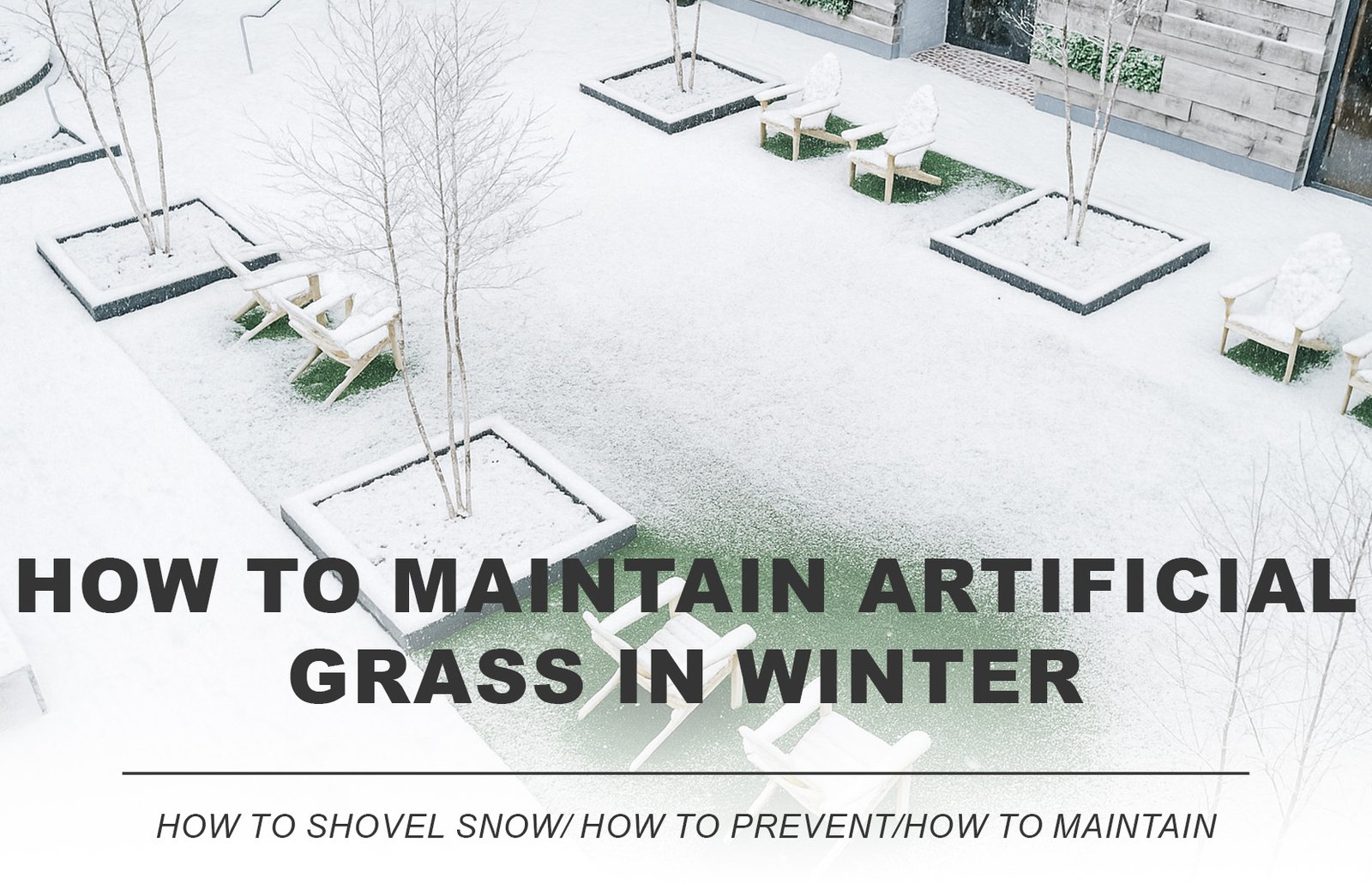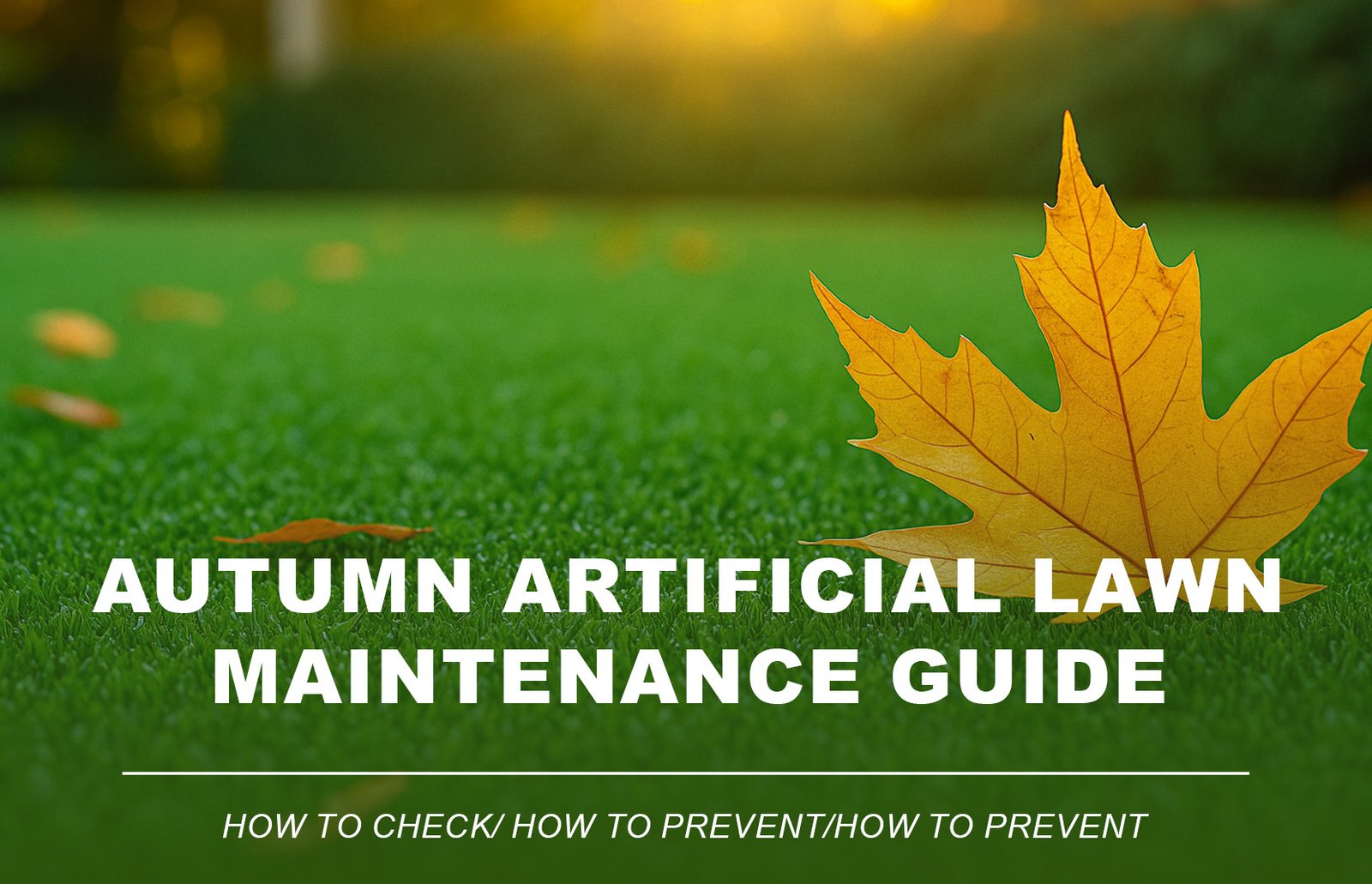
Is Winter a Problem for Artificial Grass?
Artificial turf is loved for its all-season green appeal and minimal upkeep—but what happens when winter rolls in with snow and freezing temperatures?
If you’re wondering how to handle artificial turf winter care, this guide has you covered. We’ll explain everything from frost protection and snow removal to mold prevention—ensuring your lawn stays clean, safe, and vibrant through the coldest months.
1. Can Artificial Grass Freeze or Get Damaged in Cold Weather?


Yes, artificial grass can freeze in extreme cold—but it won’t be damaged if it’s made with high-quality, frost-resistant turf fibers like polyethylene (PE).
It won’t turn brown or muddy like natural grass
Fibers may stiffen temporarily, but bounce back as temperatures rise Proper drainage prevents water from freezing on the surface
Tip: Choose cold-weather turf with a drainage rate over 60L/min/㎡ to avoid standing water and ice buildup.
2. Snow & Ice Removal: What’s Safe for Synthetic Turf?
Wondering how to remove snow from artificial grass without causing damage?
You should clear snow from your lawn—especially in high-traffic areas—but do it gently:

- Use a plastic snow shovel (never metal)
- Try a soft-bristle broom or leaf blower for light snow
- Let frost melt naturally—do not use sharp tools
- Avoid salt or de-icing chemicals, which can degrade the turf’s backing
Pro Tip: After a heavy snow, brush fibers upward to help your synthetic turf regain bounce. This simple winter turf care habit maintains appearance and safety.
3. How to Prevent Mold, Algae & Odors in Winter
Cold, wet weather increases the risk of mold and algae—especially if organic debris is left to rot on your lawn.
To prevent turf mold in winter, follow these best practices:


- Clear fallen leaves and pine needles weekly
- Use pet-safe antimicrobial turf spray to kill bacteria and neutralize odors
- Promote airflow in shaded areas (don’t trap moisture under covers or objects)
- Inspect drainage outlets monthly to avoid water pooling
4. Winter Artificial Grass Maintenance Checklist
Keep your synthetic grass winter maintenance simple with this checklist:

Weekly Tasks:
• Sweep the surface to remove debris
• Brush flattened fibers in high-use zones
• Spot-check for snow and ice accumulation

Monthly Tasks:
• Rinse with warm water to clear grime (skip pressure washers)
• Check seams and edges for frost heave or separation
• Apply anti-mold spray if conditions are damp
5. What to Avoid During Cold Weather Turf Maintenance
To preserve your artificial lawn during winter, steer clear of these common mistakes:

🚫 Don’t use rock salt or harsh ice melts
🚫 Don’t let snow remain packed down for long periods
🚫 Don’t let leaves, branches, or pet waste sit on the turf
🚫 Avoid walking on frozen turf with cleats or spikes
These tips are essential to effective artificial turf winter care—protecting both appearance and longevity.
6. Best Tools & Products for Winter Turf Maintenance
The right gear makes winter synthetic grass care much easier. We recommend:




• A lightweight plastic snow shovel or rubber broom
• Battery-powered leaf blower
• Antimicrobial turf spray for bacteria control
• Pet-safe turf deodorizers
7. Winter FAQs: Common Artificial Grass Questions
Q: Can I walk on frozen turf?
Yes, gently. Avoid heavy impact—frozen blades are brittle and may mat down temporarily.
Q: Should I cover my turf in winter?
Not necessary in most regions, but a breathable mesh cover helps protect high-traffic areas from snow overload.
Q: Does artificial grass grow mold in winter?
Only if moisture is trapped. With basic winter artificial grass maintenance, mold is easy to avoid.
Conclusion: Cold-Weather Care = Year-Round Beauty
Even in snow and sub-zero temperatures, artificial grass winter maintenance is simple and effective. With just a few habits—clearing debris, brushing turf, and using the right tools—you’ll preserve its vibrant look and performance.
Thinking about upgrading to cold-weather artificial grass?








